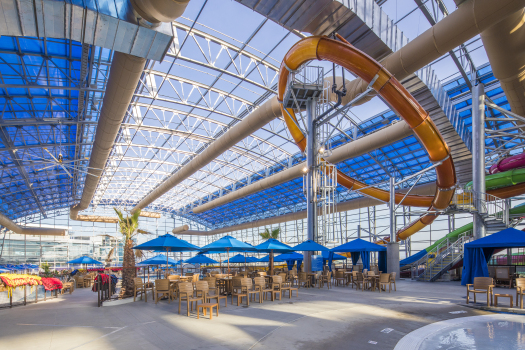Despite COVID-19 concerns, the waterpark industry is still dynamic and poised for growth. The latest article from the International Association of Amusement Parks and Attractions (IAAPA), which cites H&LA research, discusses total investment, design trends, new and emerging markets for waterparks, the diversity in development, and the optimism for the future of the industry.
Published by: Juliana Gilling/IAAPA
Published date: July 2020
Indoor water parks have expanded in recent years, bringing resort experiences, nature-themed getaways, and favorite characters to receptive markets. As 2020 dawned, the prospects looked bright for the global water parks industry following two decades of growth. In the United States alone, indoor and outdoor water park openings were expected to “total over $1 billion in investment in 2020,” according to David J. Sangree, president of Hotel & Leisure Advisors, in the hospitality consulting firm’s “2020 U.S. and Canada Waterpark and Resort Trends” analysis. Market watchers were keenly awaiting indoor water park launches, including the Kalahari Resort in Round Rock, Texas, and Great Wolf Lodge in Manteca, California.
While the COVID-19 pandemic has caused unprecedented challenges for the global water park industry, operators continue to navigate the best way to safely serve guests while bringing to life the trends growing in recent popularity.
Design Trends
In the past decade, increased investments have created a vibrant new generation of indoor water parks that continue to evolve. Designers have embraced different brands and personalities, translating them into bespoke indoor spaces that please a growing number of guests.
“Indoor water parks can be a catalyst for growth,” says Ray Lauenstein, business development manager at Aquatic Development Group (ADG).
ADG designed and built one of 2019’s major debuts, the $150 million Kartrite Resort & Indoor Waterpark at the Resorts World Catskills campus in Monticello, New York. Natural light shines through the barrel-vaulted roof, illuminating primary-colored slides, tropical landscaping, deck areas, and cabanas within the 2-acre water park. Highlights include a FlowRider surfing simulator, an action river, a kids activity pool, a multilevel play structure, five water slides, an indoor/outdoor pool, and a mezzanine with a bar and grill.
When conceptualizing a new property, water park designers consider the “full guest experience for all of the customers,” says Lauenstein. The goal is to create a fun and pleasant experience that everyone will want to repeat. New designs may be as simple as putting side walls in a toddler pool so that parents can sit comfortably, creating adult-only pools and bar areas, or turning down the volume on children’s games, as not to disturb adults resting nearby.
ADG’s team looks at the nuances of how guests interact with the water and revenue-generating areas.
“Capturing guest spend is the key to profitability,” says Lauenstein.
Gaylord Opryland Resort in Nashville, Tennessee, called on ADG to create SoundWaves, an indoor/outdoor water park experience integral to its $90 million expansion. The mega-convention resort brand is known for its transparent atriums, lush landscaping, and fashionable style. ADG designed a complementary 111,000-square-foot indoor water park, with crisp white architecture, elegant water curtains, and green walls of plants in a sunlit space.
The indoor SoundWaves is an innovative, vertical park with pools on three levels. ADG wove two separate rivers around and under the building’s structures.
“We’re very happy with the openness of the space, how the levels are connected for the guests, and with the sweeping vistas,” says Lauenstein.
While designers and operators look forward to studying guest patterns upon reopening in the wake of COVID-19, Lauenstein expects a renewed focus on queue design, visitor flow, cashless interactions, and food service in future designs.
To read the entire article at IAAPA, click here.


